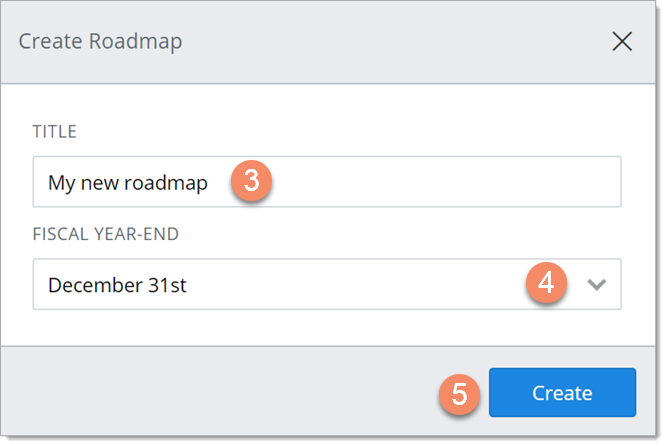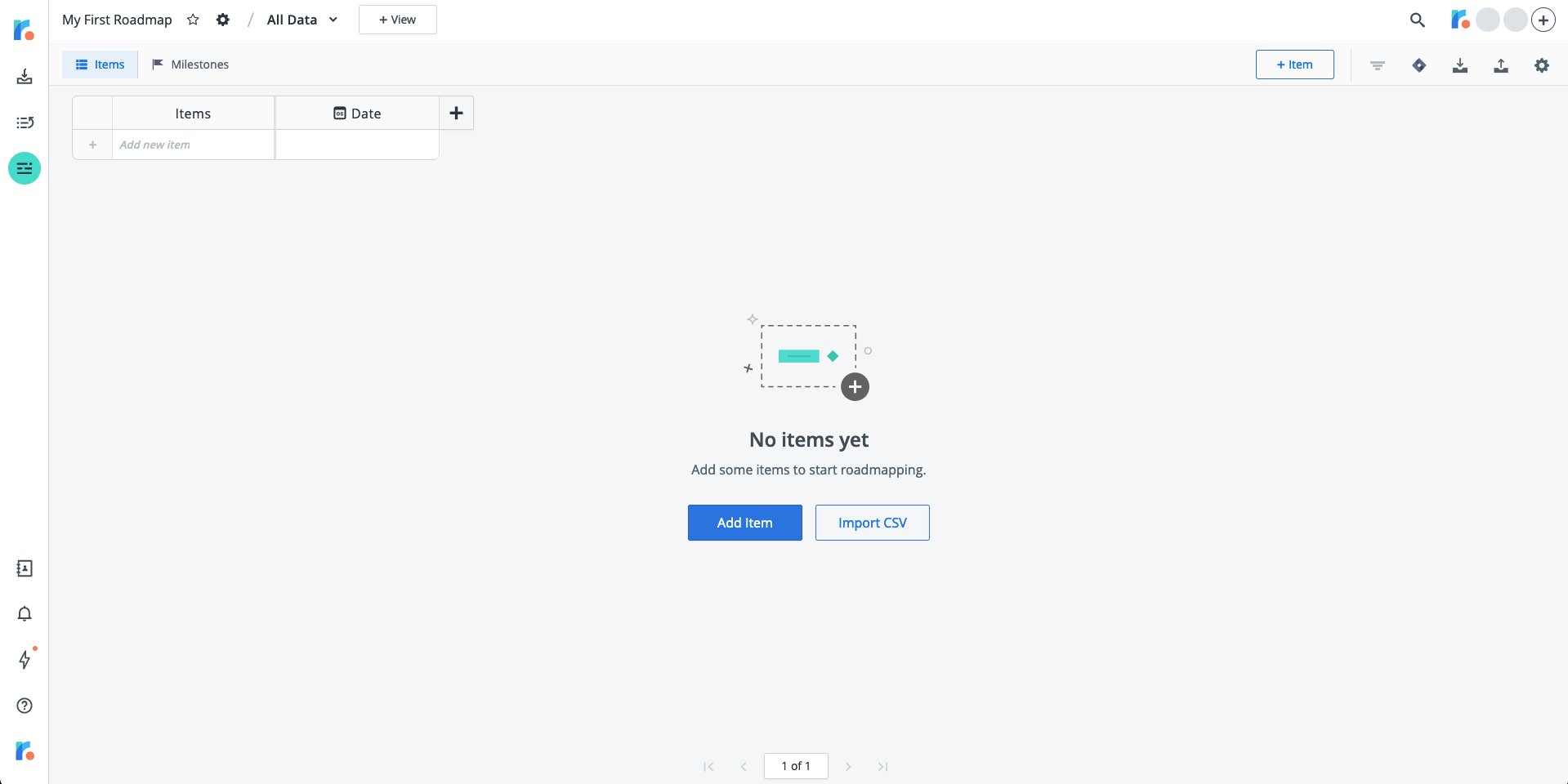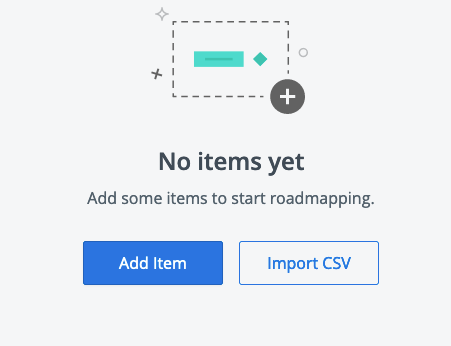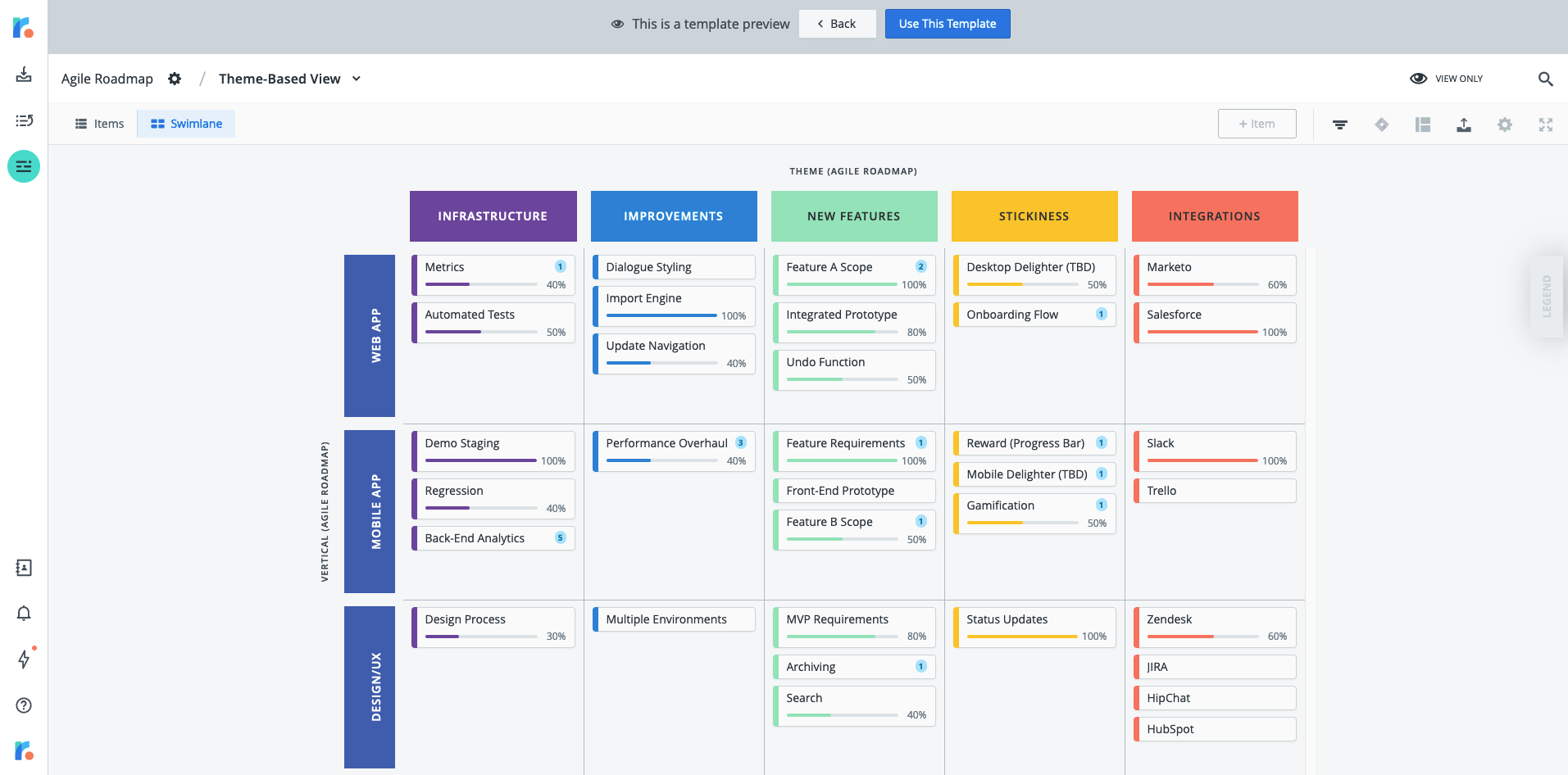Creating a New Roadmap
There are two ways to create a roadmap in Strategic Roadmaps: from scratch or using one of our customizable in-app templates.
Getting Started with Creating a New Roadmap
Who can create a roadmap?
To create a roadmap in Strategic Roadmaps you must be a Collaborator. Collaborator is one of the three user roles in Strategic Roadmaps.
Collaborators can create and own roadmaps, edit and delete their roadmaps, share their roadmaps with other users, and view, comments on, and edit roadmaps that are shared with them.
What is roadmap ownership?
Every roadmap in Strategic Roadmaps has an Owner. The person who creates a roadmap automatically becomes its Owner.
As a roadmap Owner, you have special permissions that no other user has. You can share your roadmaps with other users and edit sharing settings. You can reassign ownership of your roadmaps to other users and you can delete your roadmaps.
Why do roadmap year-ends matter?
A roadmap's year-end affects how the roadmap's Timelines will appear. If the roadmap has a Fiscal year-end (not December 31st), you can select whether the timeline displays the Fiscal year-end or the Calendar year-end. In addition, while calendar months always appear on timelines, setting a custom Fiscal year end will determine where Quarters, Halves, and Years are displayed in relation to the timeline.
Strategic Roadmaps defaults to December 31st as the standard year-end. If your organization uses a Fiscal year-end, your Account Admin can change the default year-end in the Company tab of the Account Settings page.
Creating a New Roadmap from Scratch
When you log in to Strategic Roadmaps, the first thing you see is your Roadmaps homepage. This dashboard is where you can see and access all your roadmaps as well as the ones other people in your account have shared with you. The dashboard is also where you start to create a new roadmap.

If you haven't created any roadmaps yet, click the New Roadmap button, otherwise click the + New button in the top-right of the screen and then select New Roadmap in the dropdown.
In the Create Roadmap dialogue, enter a Title and select a Fiscal Year-End. To customize the default fiscal year-end, check out our quick guide here.
Click Create to create your new roadmap.
Be careful not to confuse New Roadmap with New Portfolio. Portfolio Roadmaps roll up one or more source roadmaps into a single Portfolio that provides a higher-level view of an organization's strategy. You can find out more about Portfolio Roadmaps in our Working with Portfolio Roadmapping article.

TIP: The title should be short but descriptive. To differentiate it from similar roadmaps in the account, you may want to append your name or the name of your team or department.
The Roadmap screen
Here's a snapshot of the Roadmap screen and how it looks right after you create a new roadmap. The Roadmap screen is where you work with roadmaps and their views.

The Roadmap Navbar
The Roadmap navbar contains tools to work with the roadmap that's currently open. Now, it's the roadmap you just created.

Roadmap home icon - Takes you to your Roadmap Home, where you can open another roadmap or create a new roadmap.
Roadmap Settings dropdown - Rename, duplicate, and Archive the roadmap.
View dropdown - Gives you access to the roadmap's different views including the All Data view. All new roadmaps start out with a single default view named View 1.
Add View button - Create a new view for the roadmap. Each roadmap view can have only one visualization: a Timeline or a Swimlane.
Roadmap Sharing icons - Share the new roadmap with other users and, later, view share settings.
The Roadmap Toolbar
The Roadmap Toolbar contains tools to work with the roadmap view that's currently open.

Items icon - Displays the Items Table in the roadmap viewing area (see 3 below). The table provides a tabular view of the items in the roadmap. Because you started from scratch, your roadmap has no data, and so the Items Table is empty except for the header row. Note that the Items Table has two default fields: Items and Date. All roadmaps must have these two fields, even if they have no values.
Milestones icon - Displays the Milestones Table, where you can add and view milestones.
Same as the Items Table, the Milestones Table is empty when you create a roadmap from scratch.Visualize button - Create the visualization for View 1. Each roadmap view can have only one visualization: a Timeline or a Swimlane. The button is displayed on the navbar only if the open view does not yet have a visualization. TIP: To add more visualizations to a roadmap, create new views.
Add Item button - Create and add individual items to the roadmap from scratch.
Filter, JIRA Integration, Import, Export, and Settings icons - Add filters to the open roadmap view, set up your JIRA Integration, import CSV file into the roadmap, export roadmap items/publish roadmaps, and change view settings.
Now is probably a good time to use the Settings icon to rename the default view to something other than View 1.
The Roadmap Visualization

The roadmap viewing area is where roadmap data is displayed. The data set that's displayed and how it's displayed depends on which roadmap view is currently open and whether the view's Items Table, Milestones Table, or visualization is selected.
In all new roadmaps created from scratch, View 1 is open with the Items Table selected, and the table is empty until you start adding items.
4. Create New Item and Import from CSV buttons

The Create New Item and Import from CSV buttons make it really easy for you to add items to your roadmap right away. For help on this big next step, see Create and import items in our Getting Started tutorial.
Creating a Roadmap from a Template
There are two ways to start creating a roadmap from template: from within Strategic Roadmaps or from the Template Library on our website.
From the Roadmapping Homepage
If you're signed in to your Strategic Roadmaps account, start creating a roadmap from a template by going to your Roadmap Home and selecting the Template folder.

On the Roadmap Home navbar, click Templates.
In the Templates panel, click on the template you want to use. TIP: You can also get more details on each of our templates in the Template Gallery.
On the Template Pre-view page, click Use This Template.

In the New From Template dialogue, you can enter your own name for the roadmap (Title) and select a different Fiscal Year-End from the default.
Note: To find out how year-ends affect roadmaps, go to Why do roadmap year-ends matter further on the article.You will have the option to either Use Sample Items; Or if you don't want to copy the sample data in the template to your new roadmap, select Start Empty. TIP: Every template comes with sample items that you can duplicate as well as roadmap fields and views, each with its own visualizations, filters, and data pivots (if you're not familiar with any of this, take a few minutes to go through our Roadmapping Basics article). The sample data is really useful if you want to try out a roadmap before creating one of your own.
Click Create.